Lemongrass is a spicy herb with a concentrated lemon flavor, the stem of which is used in cooking.
Lemongrass plant grows in many countries with tropical climates. It is common in the culinary cultures of Thailand, Indonesia, India, and Sri Lanka.
Fresh lemongrass gives its aroma, bright flavor, and piquancy to many Thai and Asian cuisines.
For culinary use, lemongrass is constantly subjected to the initial processing: cut off the lower onion and remove the tough top layer.
It is also customary to lightly beat the lemongrass before using it to change its consistency.
Lemongrass must be properly sliced to get the most out of its delicate flavor so as not to spoil your cooking with it.
Let’s find out how to mince lemongrass properly.

Contents
- 1 Nutritional value and composition of lemongrass
- 2 How to choose the right stalks?
- 3 The use of lemongrass in cooking
- 4 How to mince lemongrass?
- 4.1 Cut off the bottom of the lemongrass
- 4.2 Cut off the top stems
- 4.3 Divide the remaining lemongrass in half, cutting it from top to bottom
- 4.4 Press down on the inside of the grass to find tender spots
- 4.5 Remove the thick core and tough outer layers
- 4.6 Cut the remaining lemongrass stalk into 1/4-inch pieces
- 5 Cooking uses of dried lemongrass
- 6 How to mince lemongrass properly: useful tips
- 7 How to store lemongrass?
- 8 Lemongrass infusions
- 9 Do you want to grow lemongrass?
- 10 FAQs
Nutritional value and composition of lemongrass
The main component of lemongrass is citral. It has a bright flavor and citrusy aroma.
The nutritional value of raw lemongrass is only 99 calories per 100 g, so this plant is perfect for a diet menu.
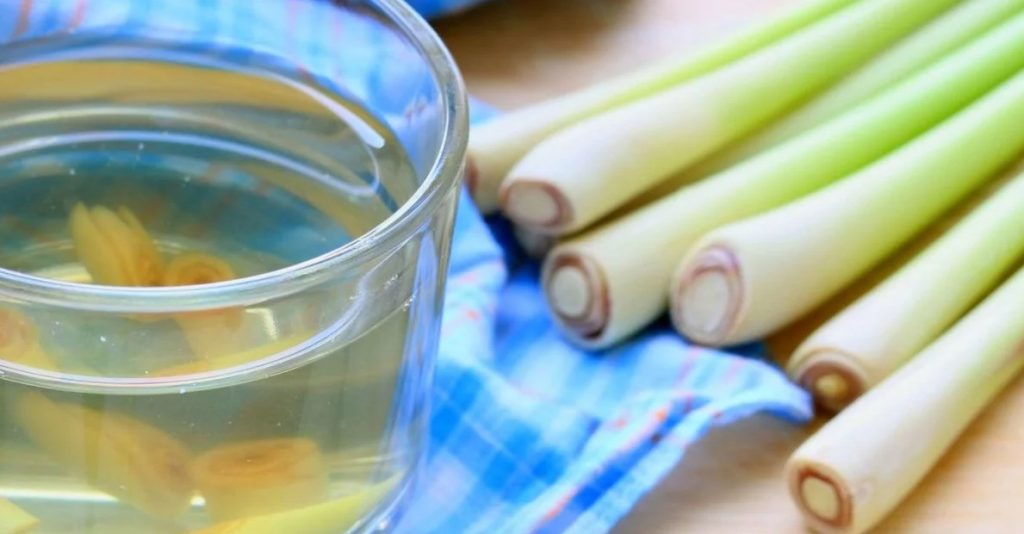
How to choose the right stalks?
If you want to find fresh lemongrass then it’s not difficult. It’s located in the produce section of the grocery store.
Fresh lemongrass stalks are sold in bunches of 3-4 and they are about 18 cm long.
To prepare lemongrass, the stems must be firm. Softness is a sign of an old plant.
The bottom of the lemongrass should be with a pale yellow stalk and the top stems should be green.
Very often, to keep it well, it is frozen. Such a purchase will protect you from a damaged product.
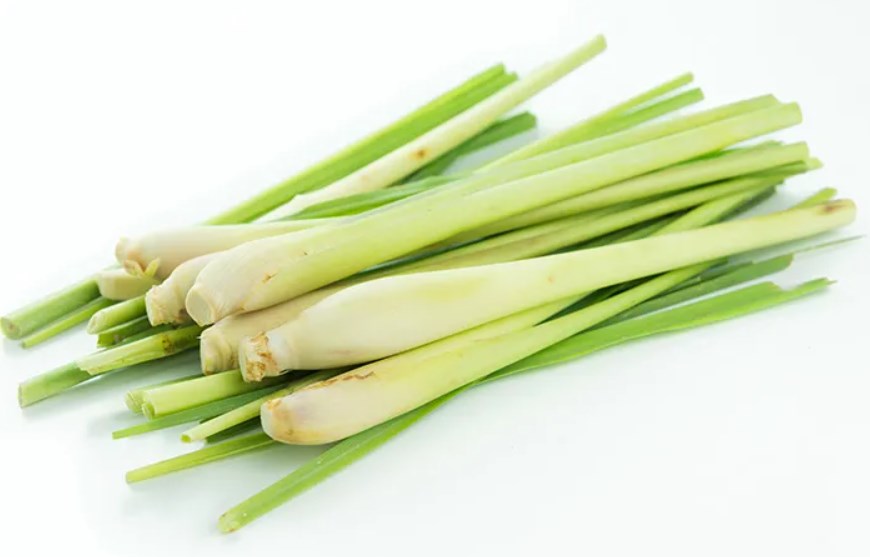
The use of lemongrass in cooking
Probably, Thai and Asian cuisines would not exist without dried and crushed it, which has an incredibly strong citrusy aroma.
When fresh, the stems of this plant are used in the process of cooking the dish, and after it is completed, they are taken out.
Also, fresh lemongrass stalks are sometimes mashed and added to an already-prepared dish.
Perhaps everyone knows that the most popular dish with the addition of lemongrass is Thai Tom Yum soup.
Lemongrass perfectly flavors sauces, marinades, meat, fish, and seafood dishes and various drinks, whether tea or a cocktail.
And even desserts to which you add it will sparkle with incredible flavors along with this fragrant spice.

How to mince lemongrass?
Cut off the bottom of the lemongrass
Cut off the bottom 1/2 inch with a sharp kitchen knife. The underside of the base of the stem is tough and tasteless.
To remove it, place a lemongrass stalk on a cutting board.
Then, using a kitchen knife, such as a chef’s knife or paring knife, cut off the bottom 1/2 inch.
Note! The base can be quite hard, so you may have to apply a lot of pressure to the knife.

Cut off the top stems
Cut off the top 6-8 inches of the stems. The dark green tops of the branches are also tough, chewy, and generally tasteless.
Cut off the tops of the stems with a kitchen knife.
After you’ve removed both the base and the stem, you should be left with a piece of light green lemongrass that’s only about 5 to 6 inches long.
If you cut off the tops of the stems, you can hang them up and use them to make lemongrass tea.
Note! Some grocery stores sell lemongrass with the green tops already removed.

Divide the remaining lemongrass in half, cutting it from top to bottom
Align the knife blade so that it runs vertically along the middle of the stem from top to bottom.
Mince the stem in half by first pressing down on the tip of the blade and then turning the blade back so that it cuts through the entire length of the lemongrass.
After cutting, you should have 2 even halves.
Make the halves as evenly as possible so the lemongrass cooks evenly.
Note! The two halves don’t have to be the same.

Press down on the inside of the grass to find tender spots
If you look inside the halves cut in half, you will notice that lemongrass is made up of several flaky layers and looks like green onions.
So, use your thumb to poke into the inner and external layers of the lemongrass to find tender pieces.
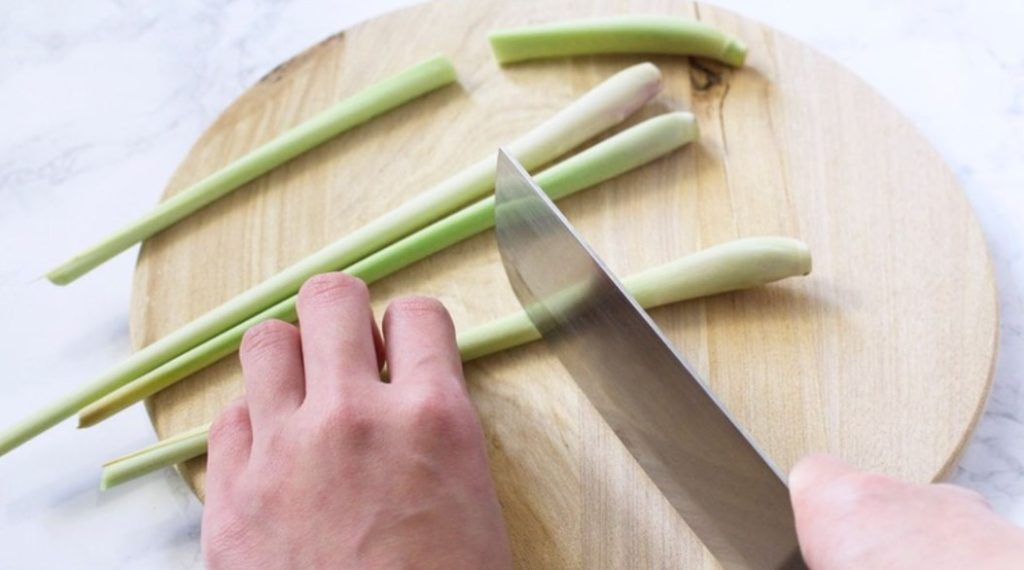
Remove the thick core and tough outer layers
Take a kitchen knife and cut off the tough parts of the lemongrass core. On most stems, you will end up cutting about 2 inches.
Then peel off the tough exterior layers of lemongrass that can’t be easily marked with your thumbnail.
In most cases, you will discard 1 to 3 external layers of stems.
Cut the remaining lemongrass stalk into 1/4-inch pieces
The two small halves you have left should be tender and edible.
Place one half on a cutting board and mince lemongrass into small pieces with a knife.
Cooking uses of dried lemongrass
Dried lemongrass adds a fresh, spicy, citrusy, and slightly herbaceous flavor and citrusy aroma to dishes.
Dried lemongrass is also seasoned with curries and other rice and bean dishes, as well as sauces, soups, fish, chicken, and stews.
Seasoning is stored at room temperature in a dark, dry place. Shelf life – 6 months.
Note! Do not use the dried herb at all in stir-fries.

How to mince lemongrass properly: useful tips
You can soak minced lemongrass in warm water if it has dried out due to age or storage conditions. Let it stand for about 10 minutes, then start cooking minced meat.
If you end up with more lemongrass than you can use in one recipe, wrap it in parchment paper and store it in the freezer until it’s ready to use later.
It will keep for about 10-14 months in a sealed plastic bag in the refrigerator.
Be sure to date the bag so you can throw it away before it goes bad.
If you want to add some zest and flavor, try thinly slicing or julienned lemongrass before adding it.
Lemongrass is most commonly used in marinades and sauces, as well as infusions. For this purpose, it is usually ground rather than left whole or chopped.
If you want to make an infusion with hot water or oil, the lemongrass itself needs to be cut into small pieces.
When you’re done chopping, be sure to wipe off any juice on the board with a damp towel.
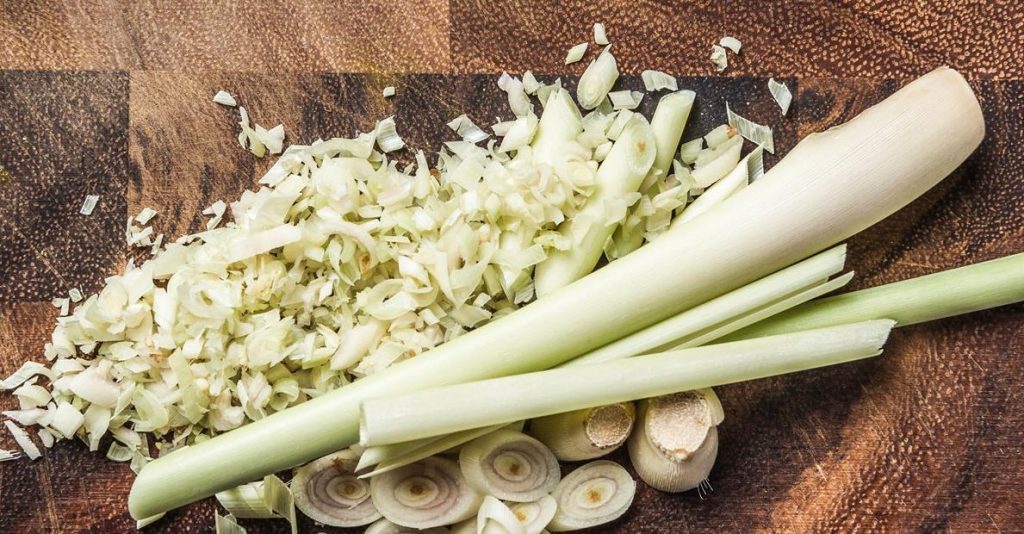
How to store lemongrass?
These hardy stems keep well in both the refrigerator and freezer. You can even turn them into a paste to keep them frozen and ready to go.
Keep refrigerated
Wrap uncut stems tightly in plastic wrap or aluminum foil and store for up to 2 weeks.
For freezer storage
Whole
Cut the green tops off the stems, wrap the stems in plastic, then seal them in a ziplock bag.
Freeze for up to 3 months. Defrost briefly before using.
Crushed
Mix the mixture in a mortar and pestle or food processor and freeze in piles of 1 tablespoon on a plate.
Transfer frozen portions to a ziplock bag. No need to defrost before use.

Lemongrass infusions
To prepare lemongrass as an infusion, you still need to use the bottom of the stem, but since you won’t be eating it, there’s no need to remove the tough external layers that still hold a lot of flavors.
You can save on waste by removing the outer layers during regular brewing to use in infusions.

To add it to soups, herbal teas, or even your favorite alcoholic beverage you should:
Crush the tender part of the stem with the side of a sharp knife like a garlic bulb, then cut it into 3–5 cm pieces.
For hot infusions such as soup or tea:
Steep in for five to ten minutes, and then take it out.
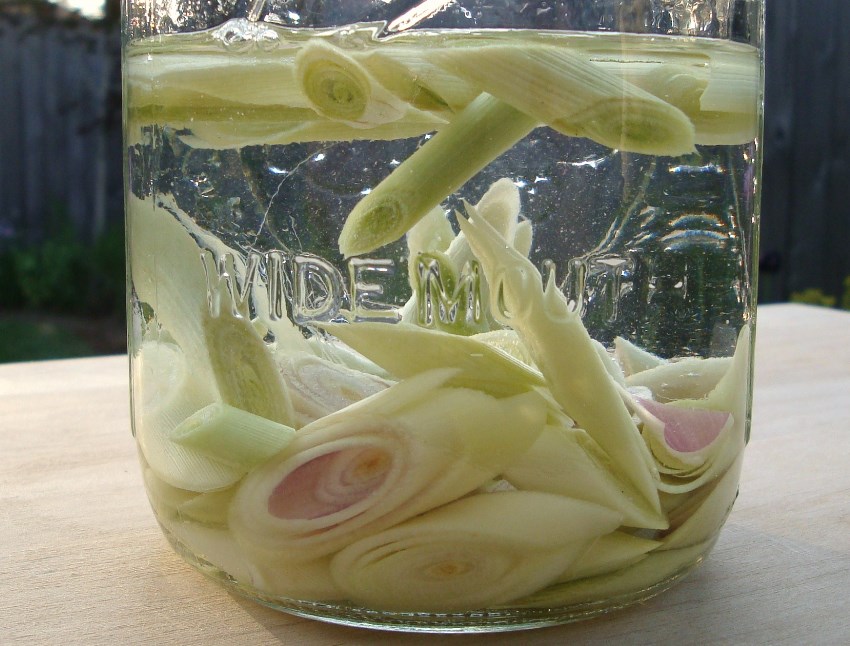
To infuse a bottle of vodka or gin:
Leave it for 4-5 days.
As with cooking, the longer you hold it, the stronger the flavor will be.

Do you want to grow lemongrass?
The lemongrass plant is easy to grow. It only takes patience to grow lemongrass.
Choose some very fresh stems.
Trim the ends a little, and keep in a glass or jar of water on a windowsill until roots appear.
Then stick it into a pot or soil.
It is also necessary to fertilize twice a year, and the lemongrass is in partial shade.
When harvesting lemongrass, use a paring knife to cut it from the base of the stem.
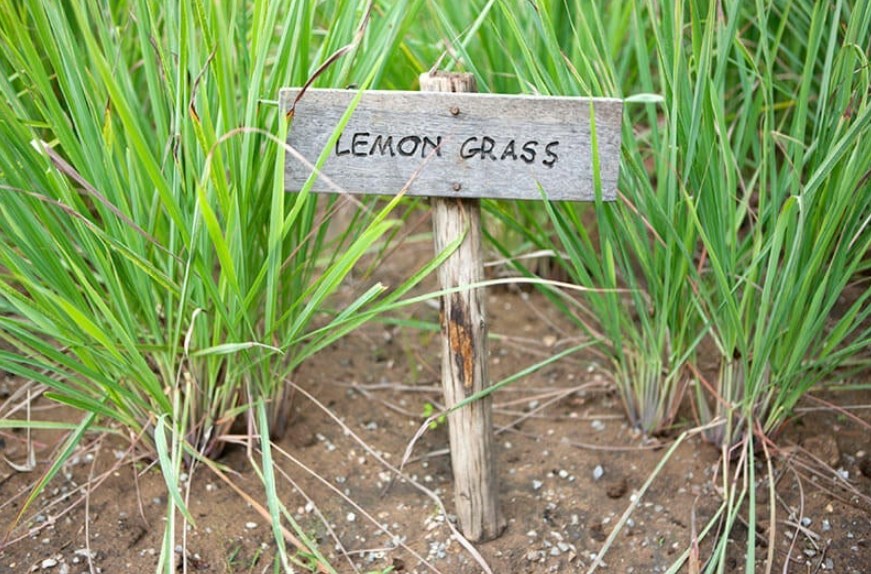
How to grow lemongrass at home: 5 main tips
Light
It grows best in full sun, even in hot climates. At least six hours of direct sun per day will meet the energy needs of the plants.
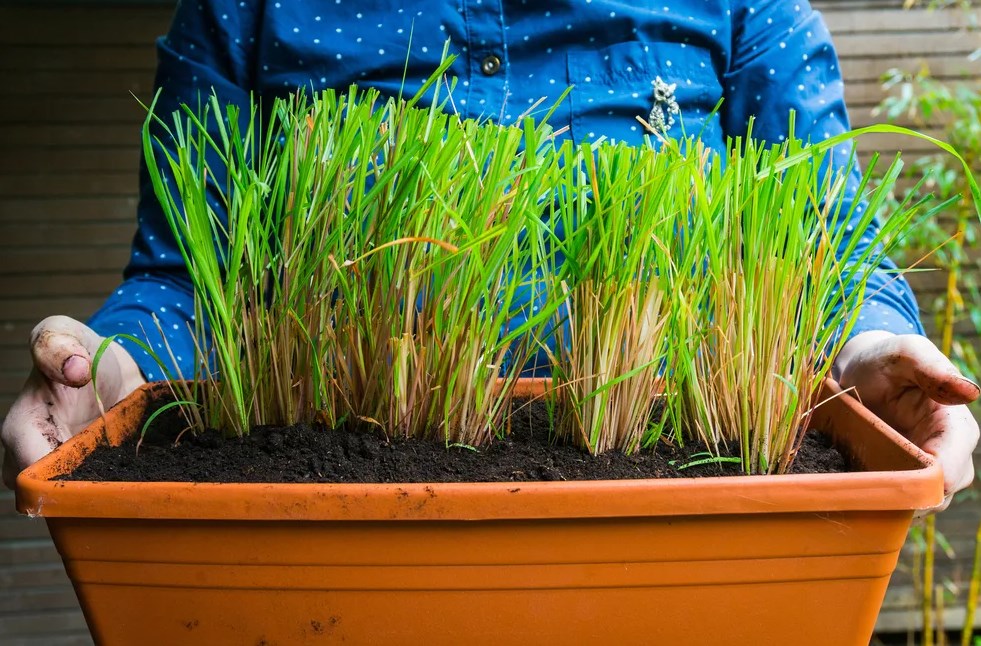
Soil
Lemongrass prefers rich, loamy soil. Just add compost, manure, and leaf mold.
Keep the soil moist but not waterlogged, and in dry places, you can spray the leaves to moisten them. If you are growing in containers, water when the soil is dry an inch below the surface.
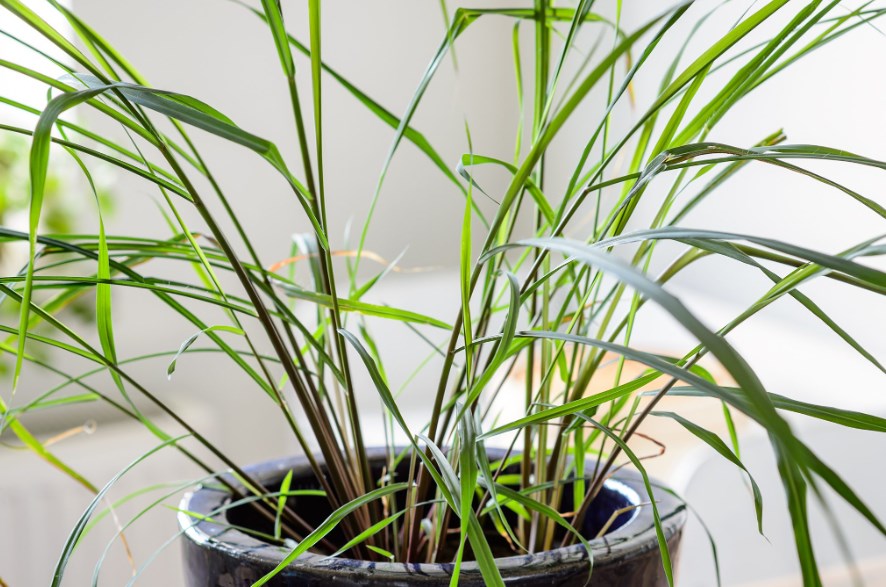
Water
It prefers moist soil for better plant growth. Enough 1 inch per week.
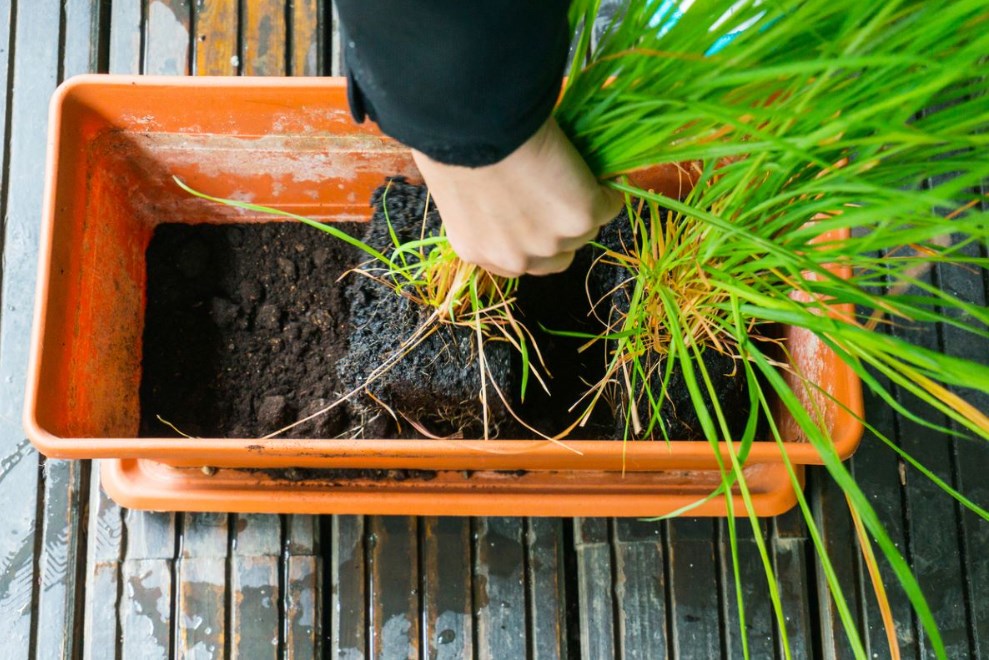
Temperature
Grows in hot, steamy climates. It is very sensitive to frost.

Fertilizer
As an herbaceous plant, lemongrass needs a nitrogen-rich fertilizer for the best growth.
You can use a slow-release 6-4-0 fertilizer that will nourish the plants throughout the growing season.
You can also drizzle it with dung tea which will add trace elements.
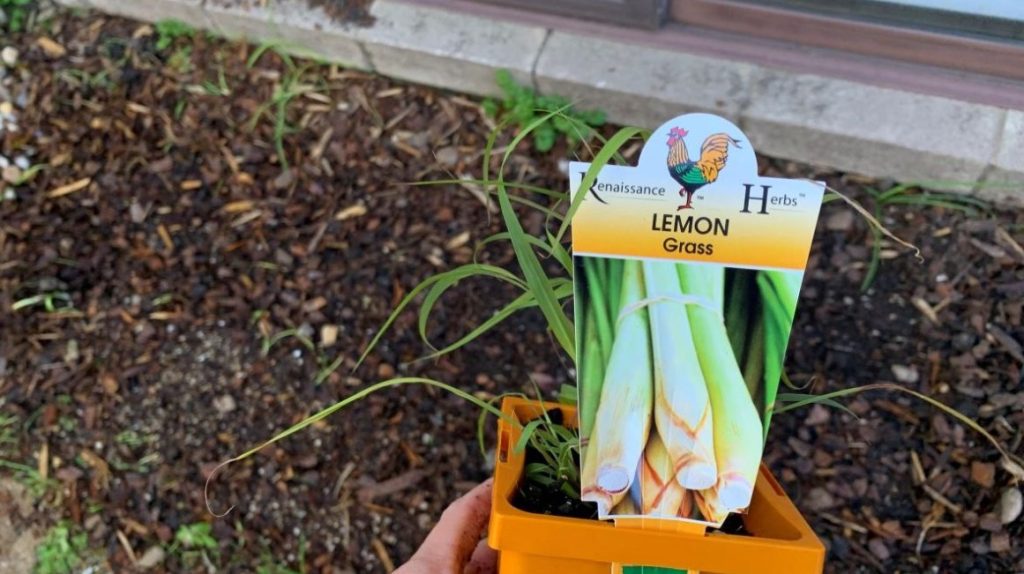
FAQs
How do you mince lemongrass in a food processor?
With a very sharp knife, cut into thin rings, removing any dried ends.
Place the slices in a food processor and process until the lemongrass is well processed.
Add processed lemongrass to the dish you are preparing.
What part of lemongrass is edible?
Only the lower bulb of the stem is edible, each part playing a role in the kitchen.
Can you eat minced lemongrass?
It is often finely chopped or pounded to break the tough stems.
Once minced, lemongrass can be added to marinades or grilled meats for a sweet citrus flavor or used to brighten up curry pastes and simple sauces.
How to find fresh lemongrass?
Lemongrass resembles a thick green onion with a pale yellow-green stalk fading into a hard white root.
When buying it, look for green, firm, and fragrant stems, and outer leaves that are not too desiccated.
Can you eat raw lemongrass?
It can be eaten raw and is a popular ingredient in Thai salads such as Yum Takrai, a spicy seafood salad with lemongrass and ginger.
However, raw lemongrass can be tough if not properly prepared, so always remove the outer woody stem and cut it thin.
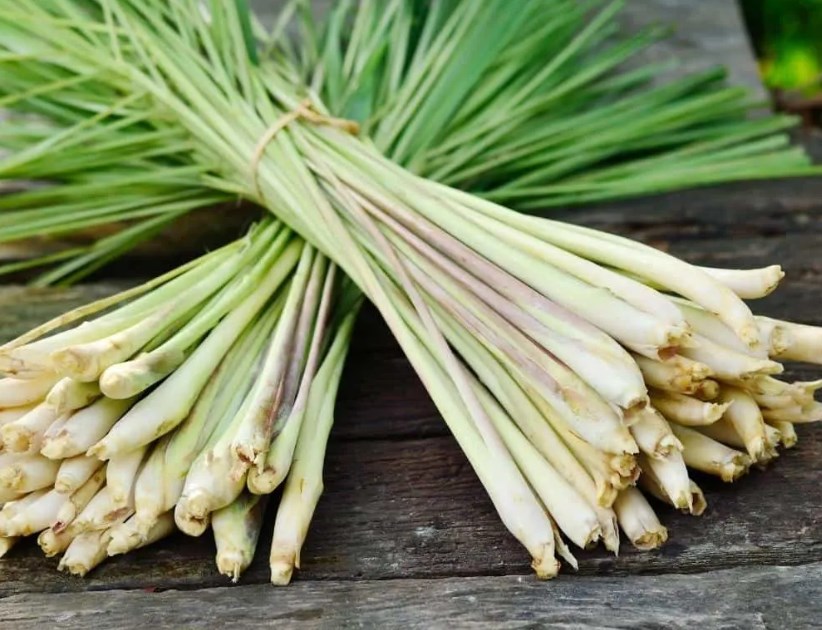
Conclusion
Grinding stalks is a great way to add flavor to your dishes.
In this article, we learn how to mince lemongrass, and perhaps you will use this information in your culinary recipes.
Preparing lemongrass is an excellent choice for dishes that require a long cooking time, as its flavor can withstand it.
Plus, you can use it to improve the quality of chicken, stir-fry, meat, or anything else.
It is a great addition to any Asian dish, giving it a citrusy flavor. The herb also has several health benefits and can be used to flavor many beauty products.
It’s easy to use and has a long shelf life, so why not head to the market and grab a couple of fresh lemongrass stalks?
Read also: Oregano pesto recipe: the best ingredients for great taste

